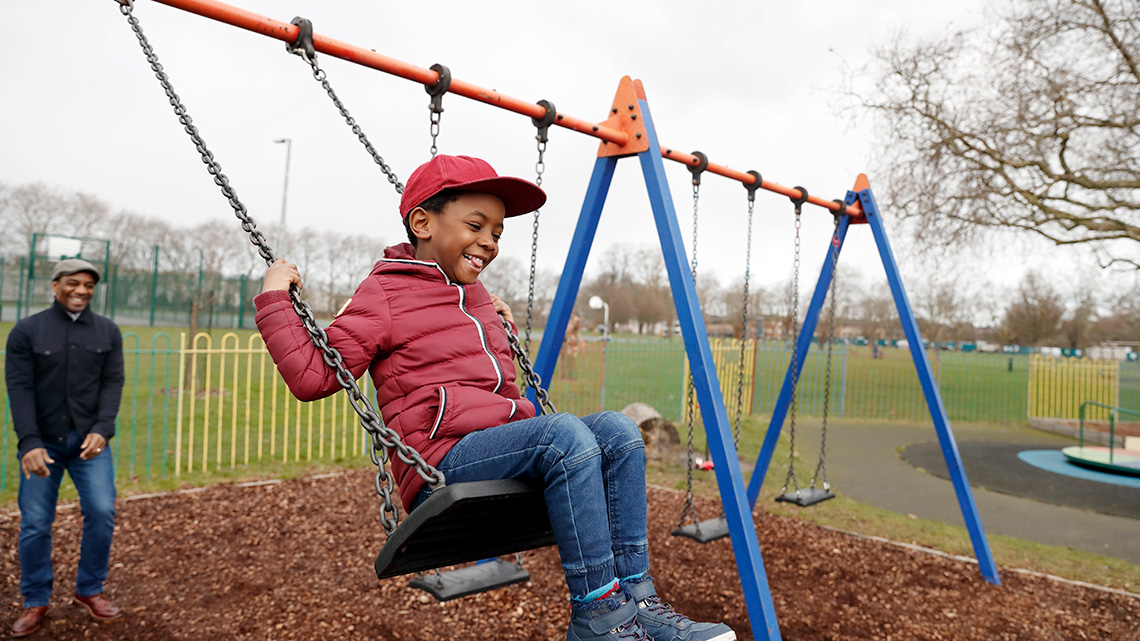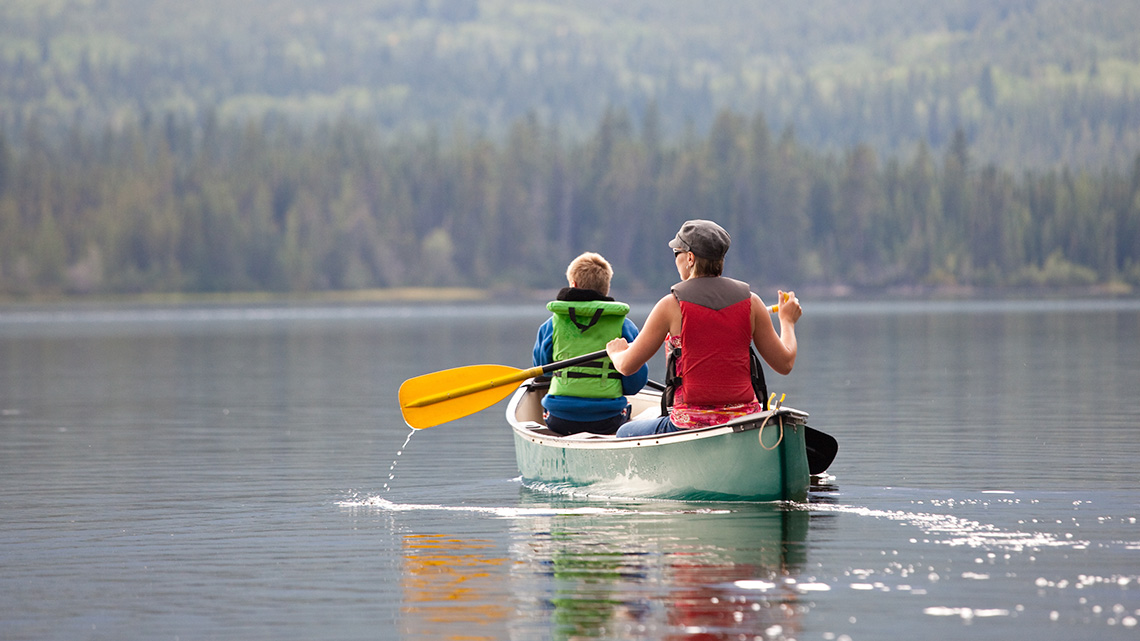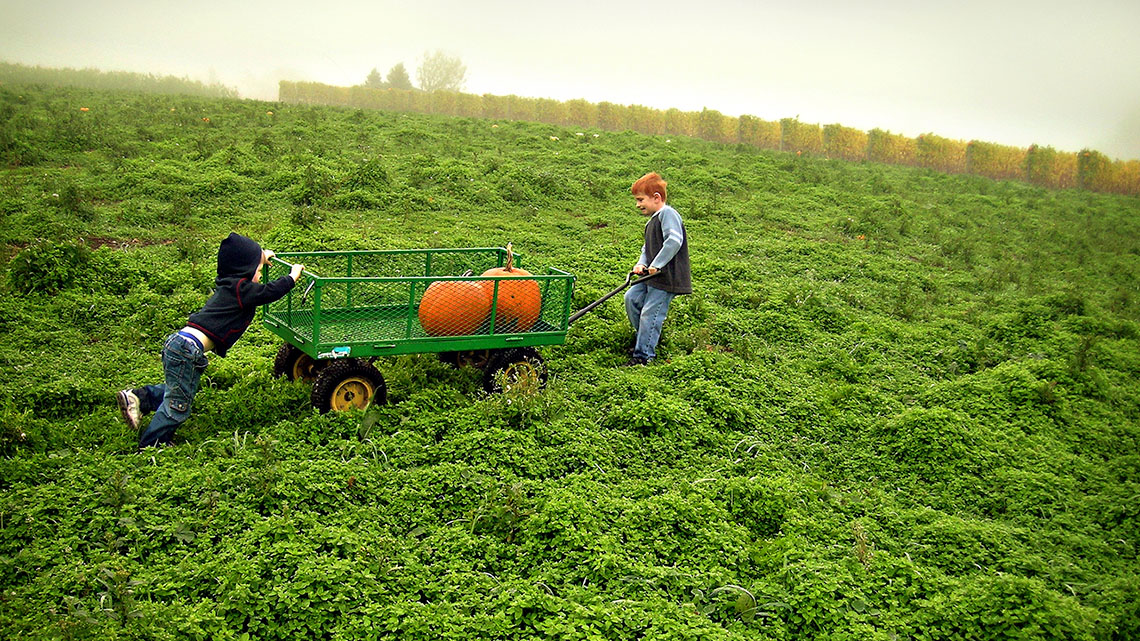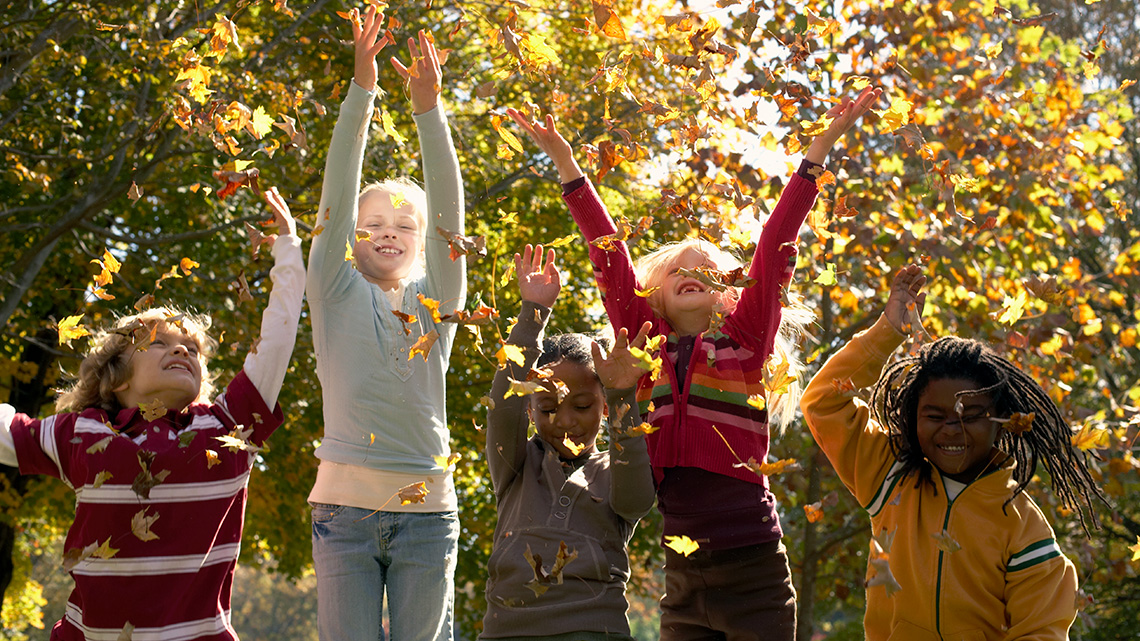Minds On
What makes objects move?
Explore the following images of objects that move.
Brainstorm
Brainstorm
After exploring the previous images, think about the following:
- What is moving in the image?
- What might be making the objects move?
- Do you think there is a way to stop the objects from moving?
- Is there a way to change their direction?
Record your ideas in a notebook or another method of your choice.
Action
Contact and non-contact forces
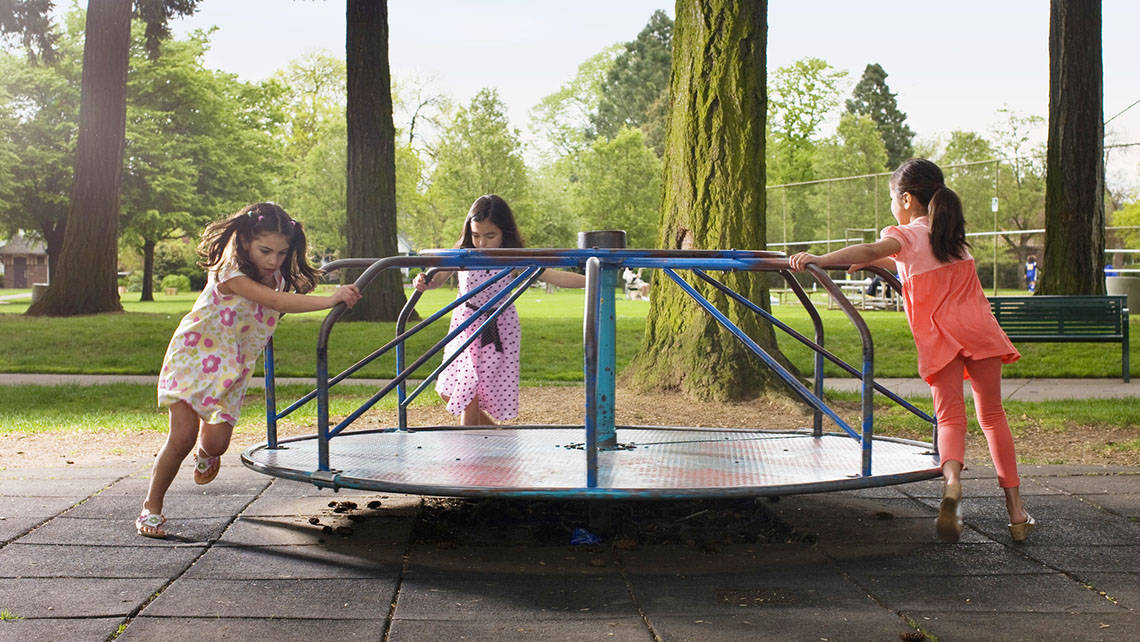
A force makes an object change speed, shape, or direction. A force can be a push, pull, or something else.
Forces can be sorted as contact and non-contact forces.
Contact forces
A contact force is a force that touches an object. When the force touches the object, the object moves quicker or slower, changes shape, or switches direction.
Investigate
Investigate
Investigate different types of contact forces.
Use the information in the following accordion to complete the Contact Forces Worksheet. You can use the fillable document or another method of your choice. If you would like, you can use speech-to-text or audio recording tools to record your thoughts.
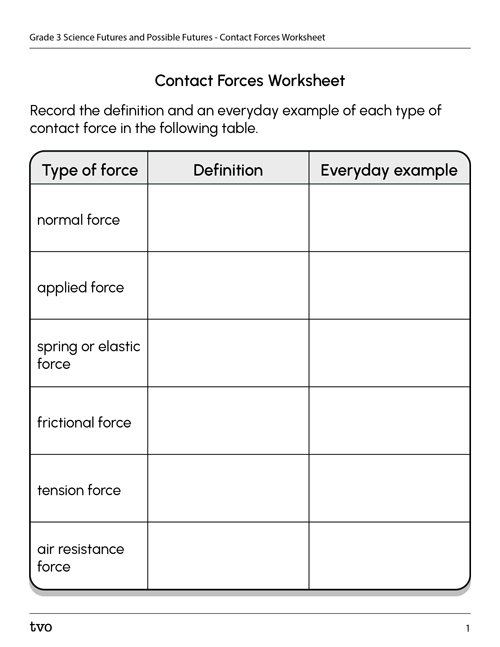
Press the Activity button to access the Contact Forces Worksheet.
Activity (Open PDF in a new window)Press the following tabs to learn more about the types of contact forces.
A normal force is a force that acts on objects all the time.
For example, the force of gravity makes something fall to the ground. Then, the object stops moving because the force of the floor pushes up on it. The force of gravity keeps people on the ground. The normal force keeps them from falling through the ground.

A normal force is a force that acts on objects all the time.
An applied force is put on an object by a person or another object. This is usually a push or pull force.
Kicking a ball, picking up a chair, and pulling a wagon are all examples of applied forces. An applied force can make something start or stop moving, or change its direction, speed, or shape.

A spring or elastic force makes an object shrink or stretch.
Explore the following video entitled “Introduction to Elastic Spring Force” to learn more about this type of contact force.
Friction is when one object rubs against another. It is a type of force that works against motion. For example, if a ball is rolling across a carpet, it will eventually stop because of friction. Smooth surfaces have less friction than rough surfaces.
Explore the following Science North video entitled “Contact and Non-Contact Forces!” to learn more about this type of contact force.
A tension force is a pulling force. It happens when a string, rope, or wire is pulled by forces acting on opposite ends. For example, in a game of tug-of-war, there is tension force as both ends of the rope are pulled on. Other examples could be towing a car or pulling a wagon.

Air and water can cause friction between an object and the air or water. Air resistance causes objects that are moving to slow down. It acts upon objects as they travel through the air. For example, someone who is sky diving or using a parachute relies on air resistance.
Explore the following video of a parachute opening.
Once you have completed the Contact Forces Worksheet, press ‘Answers’ to access the answer key.
|
Contact Forces Answer Key |
||
|---|---|---|
|
Type of force |
Definition |
Everyday example |
|
Normal force |
Forces that automatically happen around us |
|
|
Applied force |
usually, a push or pull force that make something move or changes the way it is moving |
|
|
Spring or elastic force |
a force that makes things stretch or shrink |
|
|
Frictional force |
when two objects rub together; it usually makes objects stop moving |
|
|
Tension force |
created when two forces pulling on opposite sides of something |
|
|
Air resistance force |
friction caused when something is travelling through the air |
|
Non-contact forces
Let’s explore the following three types of non-contact forces:
- gravitational force
- magnetic force
- electrical force
Record a simple definition and an example using the following chart provided, or in another method your choice.
Complete the Non-Contact Forces Worksheet in your notebook or using the following fillable and printable document. If you would like, you can use speech-to-text or audio recording tools to record your thoughts.
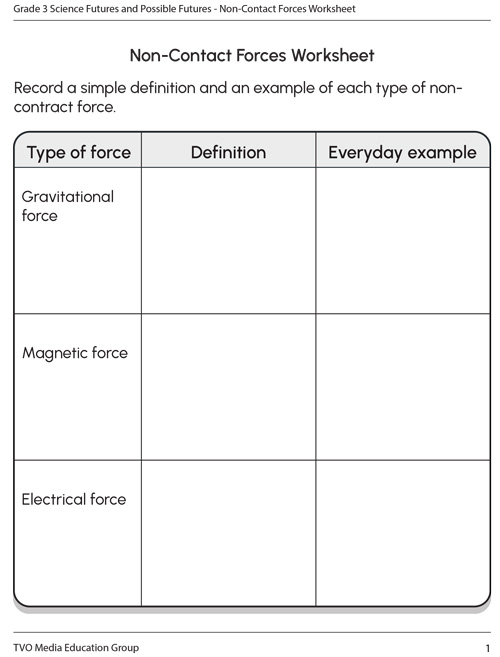
Press the Activity button to access the Non-Contact Forces Worksheet.
Activity (Open PDF in a new window)Press the following tabs to access definitions of types of non-contact forces.
When someone drops something, it will fall to the ground because of gravity. Gravity is a force that pulls two objects towards each other. It is what keeps the Earth moving around the sun. It also keeps objects and humans pulled down towards the Earth.
Explore the following Science North video “Contact and Non-Contact Forces” to learn more about gravitational force.
Magnetism can attract objects by pulling them closer, or make objects go away from each other by pushing them away. For example, a magnetic force holds magnets to the fridge and makes a compass work.
Check out the following Science North video entitled “Contact and Non-Contact Forces” to learn more about magnetic force.
An electrical force happens between any two “charged” objects. Objects can be charged positively or negatively. Two objects with the same charge will repel (or move away from) each other and two objects with different charges will attract (or move towards) each other. For example, static electricity or charging a lightbulb.
Explore the following Science North video entitled “Contact and Non-Contact Forces” to learn more about electrical force.
Once you have completed the Non-Contact Forces Worksheet, press ‘Answers’ to access the answer key.
|
Non-Contact Forces Answer Key |
||
|---|---|---|
|
Type of force |
Definition |
Everyday example |
|
Gravitational force |
|
Gravity is all around us – standing, sitting, the Earth and the sun, and much more. |
|
Magnetic force |
|
A compass uses magnetic force. |
|
Electrical force |
|
There is static electricity when someone goes down a slide. |
What can forces do?
A force can make an object go faster, slower, or stop all together. A force can also change the direction of an object that is moving. Lastly, a force can change the shape of an object.
A force can make an object go faster, slower, or stop all together. A force can also change the direction of an object that is moving. Lastly, a force can change the shape of an object.
- ‘Makes things move’ means that the force makes the object start or stop moving.
- ‘Changes movement’ means that the force makes the object change speed or direction or motion.
- ‘Changes shape’ means that the force makes the object change shape.
Forces in nature
There are many forces that act in nature as well! Some of these forces happen very quickly and others more slowly. Some of these forces can cause damage and some are fun or useful.
Some forces that can have harmful effects are:
|
blizzards |
earthquakes |
erosion and weathering |
|
floods |
hurricanes |
landslides |
|
mudslides |
tornados |
tsunamis |
In this learning activity, you will be exploring forces of wind and water in greater detail.
Wind and water are two forces in nature that can cause things to move, change speed, or change direction.

Wind
Wind is air that is moving. It is a pushing force. A strong wind can blow objects over or move objects.
Weather events, such as tornadoes and hurricanes, create very strong winds. These winds can cause damage to houses and other large structures. The forces of wind can also be fun or useful. For example, wind is used to fly a kite or power wind turbines that produce electricity.
Water

Just like wind, water is another force that can make things move, change speed, or change direction. It is a pushing force. When water moves quickly it has a strong pushing force.
When there is a flood or tsunami, the water can cause a lot of damage to houses and other structures. Water forces can also be used for fun activities, such as paddle boarding, canoeing, or kayaking. When someone does these activities, they use a paddle to create a pushing force that pushes them forward through the water. Water can also be useful in the design of something such as a hydroelectric dam. A hydroelectric dam uses water to make electricity.
Wind and water can also cause erosion and weathering. This is when the wind or water pushes against rocks, soil, sand and much more, causing them to wear away. This is a slow change. It takes a long time to happen.
Brainstorm
Wind and water forces
Can you think of any other ways that wind or water act as a force in nature?
Record your ideas using a method of your choice.
Engineering with forces
Engineers are always designing and building devices to help solve everyday problems. It’s your turn to design a device to slow the speed (decrease the force) of an object before it hits the ground.
Begin by exploring the Engineering Design Process.
Engineering design process

In Science we ask questions to help us figure out what the problem is.

Brainstorming is when you think about ideas like how to solve a problem.

When you plan something, you think about the steps you have to follow and the materials you will need.

It’s time to build. Gather your materials and your plan and start building!

Testing lets you try out your design to see if it works.

Improving is about making your design even better.

Sharing what you have learned lets other people know about your topic too!
Press ‘What is a Model’ to access a definition of model.
Model: Before building the real thing, engineers often build a model or prototype. This is used to try out different design ideas. Once they have run different tests, they improve their model or prototype, so that it is safe and ready for others to use.

It is your turn to design, and if possible, create a device that will slow down the speed of something that is dropped from high up. You may think about dropping a ball or another object.
Think about the different contact and non-contact forces like air resistance or friction.
How might these forces help you slow down the speed?
Complete the Designing a Device Worksheet in your notebook or using the following fillable and printable document. If you would like, you can use speech-to-text or audio recording tools to record your thoughts.
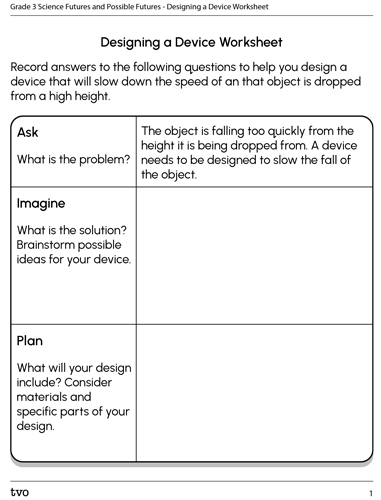
Press the Activity button to access the Designing a Device Worksheet.
Activity (Open PDF in a new window)Consolidation
Check your understanding
Check your understanding of this learning activity on Forces and Motion by completing the following fill-in-the-blanks activity.
For each sentence, select the missing word from the drop-down menu.
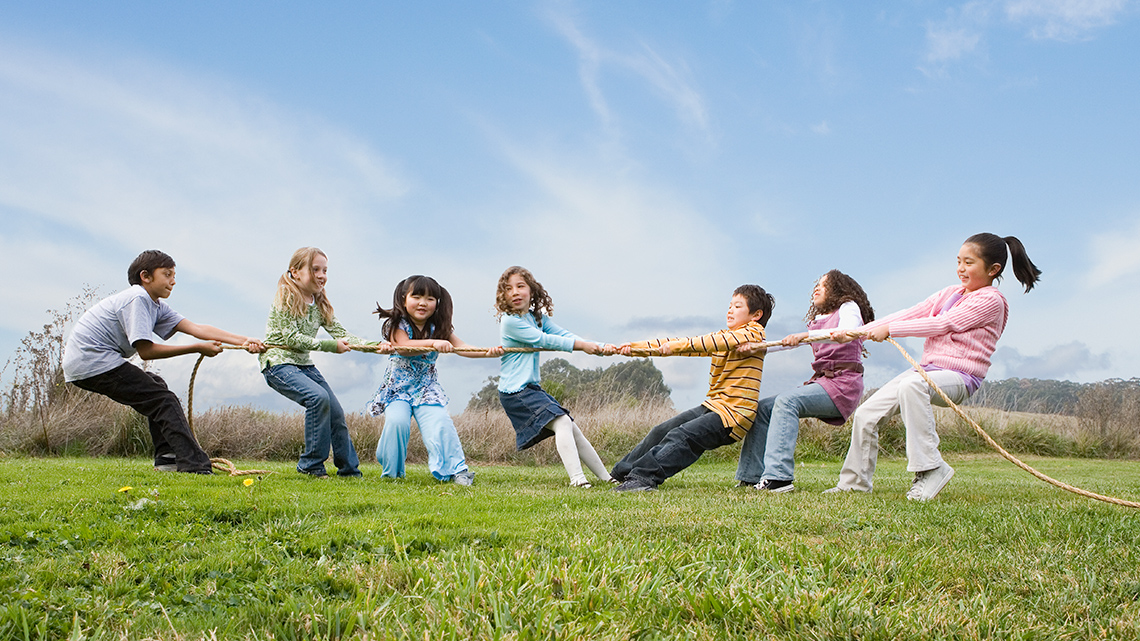
Pause and Reflect
Forces
- What is the difference between a contact and non-contact force? Give at least two examples of each that a person experiences in their everyday life.
- When you designed the device to slow the speed of the object that was being dropped, what is one thing that you feel you did well? What is one thing you would change next time?
- What are some of the harmful and helpful effects of forces created by wind and water?
Record your responses using a method of your choice.
Reflection
How do you feel about what you have learned in this activity? Which of the next four sentences best matches how you are feeling about your learning? Press the button that is beside this sentence.
I feel…
Now, record your ideas about your feelings using a voice recorder, speech-to-text, or writing tool.
